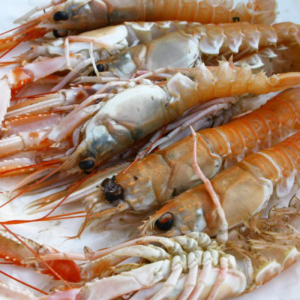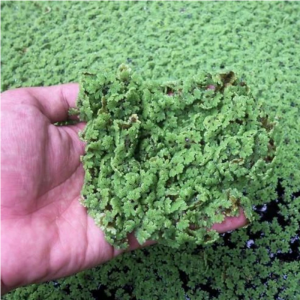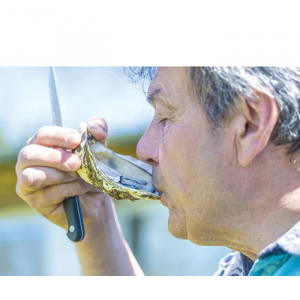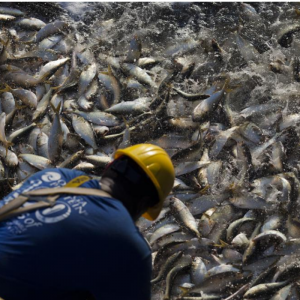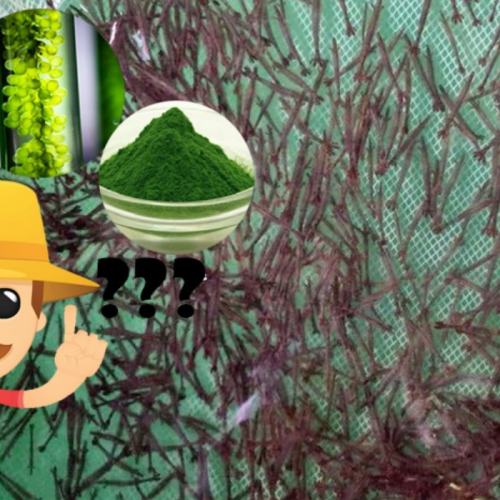
Is Fresh Algae or Powdered Algae Better for Shrimp Seed?
| Mon, 18 May 2020 - 11:59
Black tiger shrimp larvae, consuming large amounts of microalgae or algae, will "grow as fast as blow" and repel disease?
Tiger shrimp is one of the main species raised in Southeast Asia. However, like other aquatic species, black tiger shrimp also have to struggle against the disadvantages caused by diseases, weather and difficult seed supply. Shrimp seed is the first and most important link in the black tiger shrimp farming system, the seed is sensitive to even the smallest changes in the water environment. For a long time, hatcheries have known how to use algae or fresh algae powder at low cost to contribute to the growth and disease resistance of shrimp larvae. Although the effectiveness of algae is indisputable, they can also adversely affect the quality of the aquatic environment.
Algae, along with plankton, are a valuable source of primary food for shrimp larvae. In particular, fresh microalgae are a sustainable food source, providing a lot of nutrition. Shrimp larvae using algae show remarkable growth, improved digestive intensity, and immune defense mechanisms are enhanced even when the shrimp are in the smallest stages.
Some of the most popular fresh algae species today are Chaetoceros , which are small-sized, medium-sized larval mouths, promote high growth, greatly improve survival, high nutritional content, and are easy to raise. implant. Thalassiosira , another species of algae, has a higher nutrient content. In powder form, Spirulinahave abundant protein content being used the most in hatcheries. But powdered algae cannot completely replace fresh algae, due to the absence of beneficial microorganisms. Microalgae for shrimp larvae contain a large amount of bacteria, but there have been no reports assessing the influence of them on shrimp larvae. Therefore, this study analyzes the abundance as well as the benefits and disadvantages of bacterial strains for black tiger shrimp larvae, rather than the environment in which shrimp live.
Black tiger shrimp of the same size are collected at a hatchery in China. For this study, two species of fresh algae Chaetoceros muelleri and Thalassiosira weissflogii were cultured in the laboratory together with Spirulina algae powder. Divide the number of larvae into 3 equal groups, each group corresponding to each different species of algae. Designations are A ( Chaetoceros muelleri algae ), B ( Thalassiosira weissflogii ) and C ( Spirulina algae powder)). And of course, to check the difference in the effect of algae with shrimp, the water quality indicators and daily care for the groups are the same. Feeding algae combined with artificial feed for larvae from Zoea to Postlarvae stage and then start evaluating results. When shrimp increase at a regular stage, water samples are taken to check the indicators and bacterial strains present, shrimp samples are used to assess growth rate and shape metamorphosis through larval stages. DNA testing and statistical analysis to get the final results.

Results of water quality analysis showed that the concentration of NH 3 in group C during the PL period was the highest. Meanwhile, NO 2 concentration is highest in C group when shrimp is in Mysis stage. And the density of Vibrio in group A during PL period is the most abundant according to the assessment. The rate of metamorphosis of shape, survival rate of larvae and activity of digestive enzymes in groups A and B was significantly higher than group C at all stages. The diversity of bacterial strains decreases from Zoea to PL, group C has much lower density than groups A and B.
The intestinal flora is important for the health, metabolism and ability to activate the immune system of shrimp. Feeding will change the structure of this system, thereby directly affecting shrimp health. When fed with fresh algae supplement, the survival rate and growth rate of larvae were also much higher than when feeding only algae powder. Because fresh algae has changed the microbiota in the larvae. As for Spirulina powder , the survival rate begins to decrease when the larvae are just reaching the Zoea stage. In addition, the proportion of bacteria in the intestinal tract is also greatly reduced, so the ability of larvae to digest and immune function also becomes seriously impaired.
Microbacteriaceae, Pseudoalteromonas, Rhodobacteraceae are the most common bacteria on the structure of all 3 groups of algae. And has been shown to be beneficial for the growth and development of black tiger shrimp, stimulating the activity of digestive enzymes in the intestinal tract, and competing to destroy harmful bacteria that cause disease in shrimp.
Fresh microalgae in addition to promoting growth and survival for shrimp are also used as potential prebiotics to promote the regulation of the intestinal microflora. While algae powder in the production process has been destroyed into cell walls, it loses its water-soluble properties and becomes much less nutritious than fresh algae. It is noteworthy that due to the gradual adaptation from the plant to animal diet, the activity of digestive enzymes is gradually lower, which can be explained by not consuming too much energy to assimilate food. again. Fresh microalgae have also been shown to purify water and inhibit harmful bacteria in the environment.
For most aquatic animals, additional bacteria that enter the gastrointestinal tract and outside the environment have beneficial or harmful effects on the microbiological structure in the host body. At different stages, dominance also belongs to different species of bacteria. Shrimp in the larval stage, Photobacterium predominate, while Vibrio is mainly when the shrimp are one month of age and older and this ratio of Vibrio is increasing with the age of the shrimp. In addition, in different environments, the structure of this microbial community is also different.
In summary, this study has shown that the two species of algae T. weissflogii and C. muelleri significantly improved the survival and metamorphosis rates of larvae. Also stimulates the activity of digestive enzymes and the diversity of the microbial community on the body of black tiger shrimp. NH 3 and NO 2 also significantly reduced the toxicity when feeding the fresh algae, so it can be concluded that these two algae are suitable for black tiger shrimp larval rearing systems. The feeding of different types of algae can affect the change of microbial community in larvae, thereby affecting the development and health status of giant tiger shrimp larvae.
Source: Tepbac













